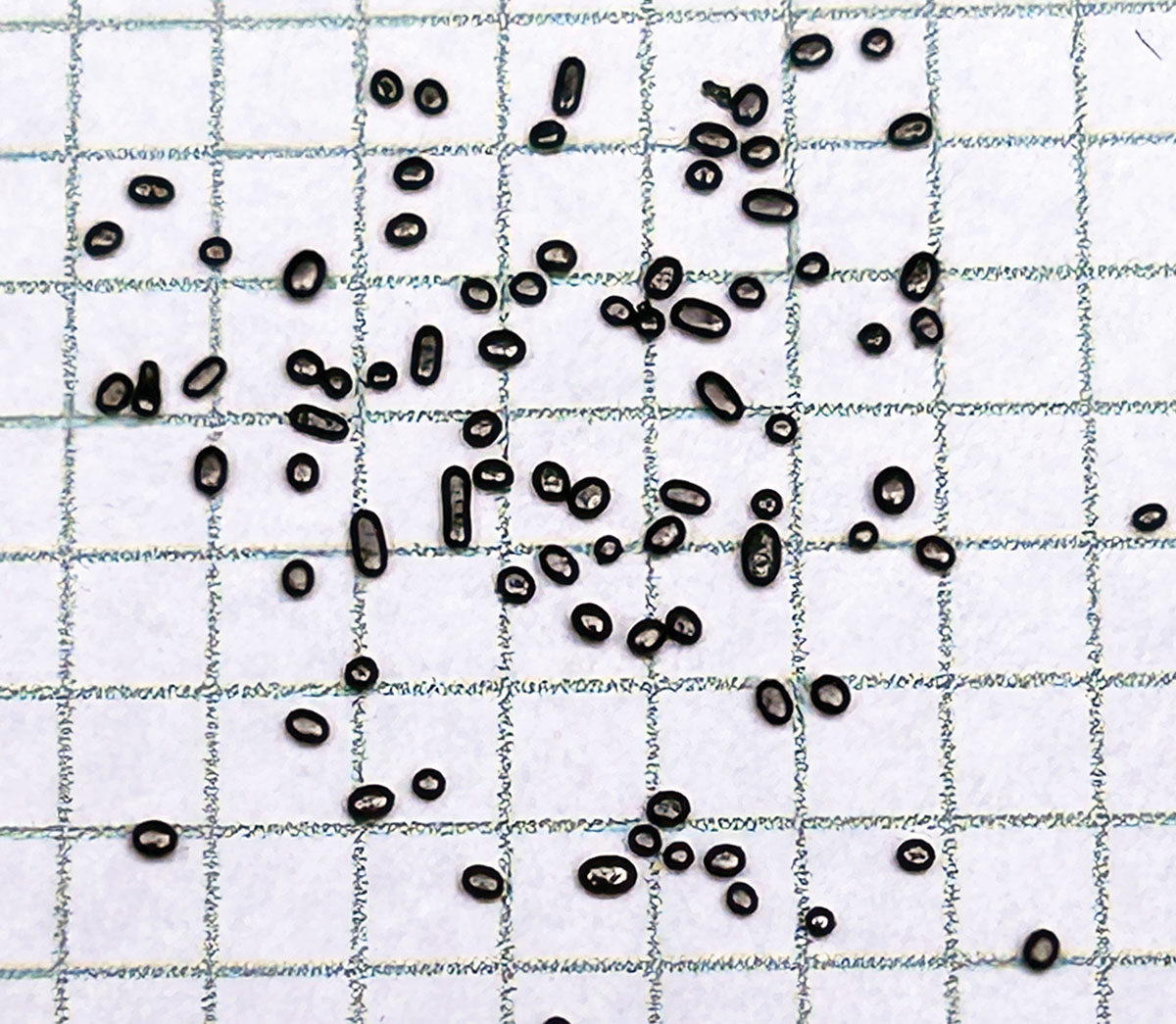Propellant Profiles
Shooters World Match Rifle
column By: R.H. VanDenberg, Jr. |
.jpg)
With a bulk density of 1gr/cc and individual grains measuring .020 inch on the near-perfect spheres and about .020 to .056 inch on the elongated grains, Match Rifle tends to pack very densely within the case. Because of this spherical propellant’s high bulk density, especially in comparison to extruded powders, it is at its best using charge masses that nearly fill the cartridge or are slightly compressed by the bullet. As a rule, any charges below about 80 percent of case capacity are going to allow excess powder migration within the cartridge, which often leads to higher standard deviations. This effect is caused by the powder column’s relationship to the primer.

You’ve come this far with me; I hope you will go a bit farther down the rabbit hole of internal ballistics. Match Rifle would be an excellent powder for use in an M1 Garand. Although extruded powders like IMR-4064, often cited as the slowest recommended powder in the Garand’s gas system, is popular with shooters, Accurate 2520 is considered a good spherical propellant option for accuracy in the M1. I tested
Match Rifle against A-2520 and found my batch produced velocities 2.3 percent below the Accurate product, indicating that the Shooters World powder has a slightly slower burn rate. Using the load noted in the load table, my Remington 740 Woodsman with a 22-inch barrel produced an average of 2,726 feet per second (fps) with an extreme spread of 31 fps.
Shooters World also has data for the 270 Winchester. At first glance, it might seem that since the 270 Winchester and 30-06 Springfield share a parent case, they should be able to use the same powders interchangeably. It isn’t that simple.
The critical measure of ratios in cartridges is a comparison between the powder column, the main body of the propellant charge and the bore column, which is the diameter and length of the bore. As the bore constriction becomes more narrow, slower powders are required.
Imagine filling a cartridge with fine sand and dumping it out. The .30-caliber bore will allow the sand to flow out more quickly than it can from the narrower 270 bore. If that sand were to represent a specific powder burn rate, the cartridge taking the longest time to empty would have generated the most pressure. Using Match Rifle, which is extremely well-balanced to the requirements of a 30-06 cartridge in a Garand, the same powder will be fast for the tighter bore constriction of the 270 Winchester.
As a result, using Match Rifle in a 270 Winchester requires a smaller charge of powder to reach peak pressure because the bore constriction limits the passage of gas, along with burning and unburned powder. A look at the charge range provided by the Shooters World interactive site showed that the maximum charge for an anonymous 150-grain FMJBT is 52.6 grains in a 30-06, while a Hornady 130-grain Interlock tops out at 45.1 grains in the 270 Winchester. The reason for this is the difference in the bore column in comparison to the 30-06. Because the propellants cannot escape within the same time frame as the 30-06, less powder is required to bring the 270 Winchester to maximum pressure.
Because there was so much room for powder migration within the 270 Winchester, I tested 10 shots with the bore oriented upward to settle the powder to the rear of the cartridge and then gently lowered the rifle onto my shooting bags. With the last five rounds, I oriented the barrel downwards and then carefully raised the rifle up to the bags, keeping the powder in the forward position as much as possible. The result was an extreme spread of 160 fps.
This is in no way an indictment of Shooters World. It is currently hard to find powders and the best match to your rifle isn’t always available. By testing cartridges where Match Rifle could work safely, but not ideally, they did a service to shooters. I’d happily use Match Rifle in one of my 270 Winchesters every day of the week rather than have it rust away in a gun safe because no other propellant was available.
What Match Rifle does extremely well was proven in my new Ruger SFAR. I hadn’t done much with the rifle and I believed that the Shooters World product was a good bet for decent accuracy in the Ruger. I ladder tested it from 42 to 46 grains in half-grain increments using Sierra 168-grain MatchKings. At 46 grains, my extreme spread was 15 fps, and the velocity was 2,619 fps. The last three groups at that highest pressure level averaged 1.35 inches. This is a tremendous powder.
.jpg)


